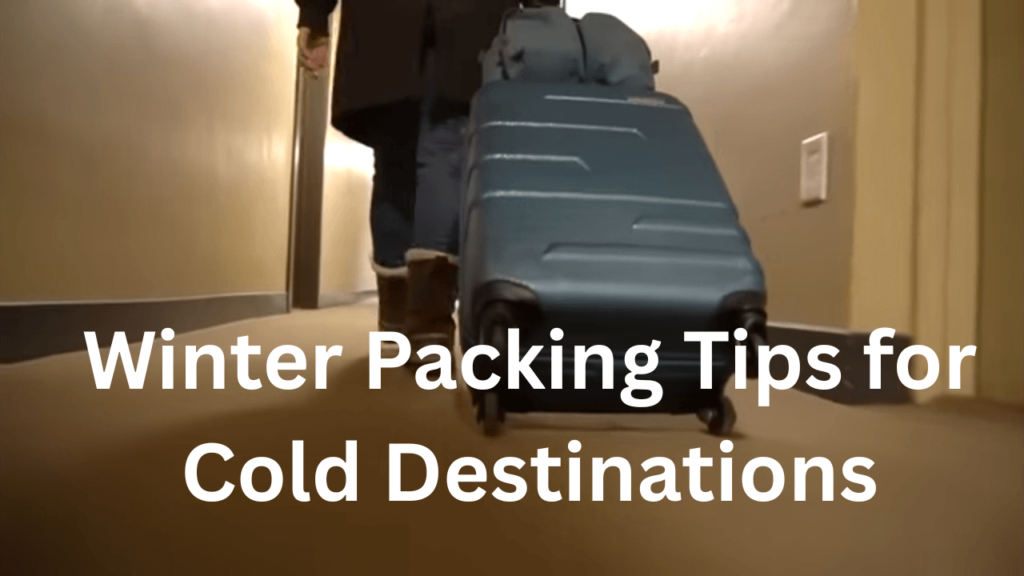Packing for winter travel isn’t just about comfort—it’s about survival, mobility, and practicality. Whether you’re planning a magical trip to Lapland, skiing in the Alps, exploring Canada’s Rockies, or visiting Northern Europe during the festive season, cold-weather destinations pose unique challenges.
Why does this matter today? Because climate unpredictability is on the rise. Winters are colder, wind chills are stronger, and snowstorms are more frequent across much of Europe, North America, and Asia. According to the European Environment Agency (EEA) and NOAA, extreme winter weather events are becoming more intense due to shifting polar vortex patterns and increased Arctic warming.
Having traveled through Iceland in January, Poland in February, and Canada during sub-zero spring snaps, I’ve experienced firsthand how poor packing choices can ruin a trip—or worse, put you at risk of hypothermia and frostbite.
Let’s break down how to pack smartly and safely for cold-weather travel.
Understand the Science of Staying Warm
Before diving into the packing list, here’s the basic science behind staying warm:
- Layering traps air and insulates your body.
- Moisture control is essential to avoid hypothermia (wet = cold).
- Windproofing prevents heat from being stripped away.
According to the Centers for Disease Control and Prevention (CDC), layering with moisture-wicking, insulating, and windproof materials is the most effective way to regulate body temperature and avoid cold-weather illness.
Choose the Right Winter Luggage
Best Luggage Type: Use a durable, weather-resistant rolling suitcase or duffel for urban winter travel. If you’re going rural or off-grid, a backpack with waterproof cover is best.
Pack with Space in Mind:
Winter clothes are bulky. Compression packing cubes or vacuum-seal bags are helpful, but only if you’re not worried about wrinkling.
Layering: The Golden Rule of Winter Travel Packing
1. Base Layer (Moisture-Wicking)
- Purpose: Keeps sweat off your skin, preventing chills.
- Materials: Merino wool, synthetic polyester (like Polartec).
- My Picks: Icebreaker Merino or Uniqlo HEATTECH.
You’ll need:
- 2–3 long-sleeve base tops
- 2–3 thermal leggings
Pro Tip: Cotton is a no-go in winter—it holds moisture and makes you colder.
2. Mid Layer (Insulating)
- Purpose: Traps warmth around your body.
- Materials: Fleece, down, or synthetic insulation.
- Best Options:
- Lightweight fleece pullover
- Down or synthetic puffer jacket
- Wool sweaters
My Go-To: A Patagonia Nano Puff—super warm, light, and compressible.
3. Outer Layer (Windproof & Waterproof)
- Purpose: Shields you from wind, rain, and snow.
- Look for:
- Insulated parka or 3-in-1 ski jacket
- Waterproof rating of 10,000mm+
- Windproof shell
Tested Recommendation: The North Face Arctic Parka — I wore this in -18°C in Montreal and stayed warm throughout.
Cold-Weather Clothing Essentials
| Item | Quantity | Notes |
|---|---|---|
| Waterproof insulated jacket | 1 | Essential |
| Base layer tops & bottoms | 2–3 each | Merino or synthetic |
| Fleece or wool sweaters | 2–3 | Mid-layer warmth |
| Waterproof boots | 1 pair | With deep tread |
| Wool socks | 4–6 pairs | Merino wool, midweight |
| Warm beanie/hat | 1–2 | Covers ears |
| Thermal gloves | 1 pair | Waterproof if possible |
| Scarf or neck gaiter | 1 | Buff-style for versatility |
| Thermal underwear | 2–3 | For sleeping or layering |
| Warm pants (jeans, lined trousers) | 2–3 | Avoid cotton if possible |
Winter Footwear: Where Many Go Wrong
Cold feet = misery. Here’s how to avoid that:
- Waterproof boots with insulation (200g–400g Thinsulate for moderate cold).
- Avoid fashion boots—they’re often not insulated or waterproof.
- Add removable insoles and thermal socks for extra warmth.
My Experience: In Iceland, I used Columbia Bugaboots—they withstood snow, ice, and river crossings.
Smart Accessories You Shouldn’t Skip
- Hand warmers (disposable or rechargeable)
- Sunglasses (snow glare can be blinding)
- Lip balm + moisturiser (air is dry)
- Travel umbrella (snow turns into sleet fast in cities)
- Portable humidifier for hotel rooms
Toiletries and Health Supplies
Winter travel is tough on your body. Pack these essentials:
- Nose balm or saline spray (prevents nosebleeds)
- Heavy-duty hand cream
- Sunscreen (yes, even in snow)
- Vitamin D supplements (if traveling for more than 2–3 weeks)
Medical note: The Mayo Clinic notes that cold exposure suppresses your immune system. Dress warm and stay hydrated to reduce risk.
How to Pack It All Efficiently
Use Packing Cubes to organize by layers:
- Cube 1: Base layers
- Cube 2: Mid-layers
- Cube 3: Pants and tops
- Cube 4: Accessories (hat, gloves, etc.)
Bundle Bulky Items:
- Wear your biggest items (jacket, boots) in transit.
- Stuff socks and gloves inside boots to save space.
Compress—but Carefully:
- Use compression bags for base and mid-layers.
- Avoid compressing down jackets long-term (it ruins the insulation).
FAQs:
Q: How do I stay stylish while packing minimally for winter?
Layer with neutrals and accessorize. A scarf or beanie adds style without bulk.
Q: Do I need snow pants if I’m not skiing?
Not always, but for places like Lapland or the Arctic Circle, they’re essential.
Q: Can I pack carry-on only for a winter trip?
Yes—but only with minimalist packing and if your jacket, boots, and base layers are worn on the plane. I did it for a 10-day Iceland trip.
Q: How do I deal with wet clothes?
Pack a dry bag or plastic compression sack. Many accommodations have radiators or laundry services—take advantage!
Final Thoughts:
Packing for winter travel can feel overwhelming, but with the right gear and techniques, you’ll not only survive the cold—you’ll enjoy it. The magic of snowy landscapes, northern lights, and winter festivals is unforgettable when you’re comfortable and warm.
From my own travels through sub-zero regions, I’ve learned that comfort equals confidence. The better prepared you are, the more you’ll explore, the longer you’ll stay outside, and the deeper your travel memories will be.

Hi, I’m Tanvir, the founder and author of Explore Ireland Now. With a deep love for Ireland and its rich culture, history, and landscapes, I created this site to share everything that makes this beautiful country worth exploring. Whether you’re a local looking for hidden gems or a traveler planning your next adventure, I provide insightful guides, tips, and recommendations to help you experience Ireland to the fullest.
From stunning landscapes to vibrant cities and quaint villages, Ireland is full of wonders waiting to be discovered. Through my personal experiences and research, I aim to bring you the most up-to-date information and inspiration for your journey.
Thank you for visiting Explore Ireland Now—I hope my content helps you uncover all that this incredible country has to offer! If you have any questions or need travel advice, feel free to reach out.



